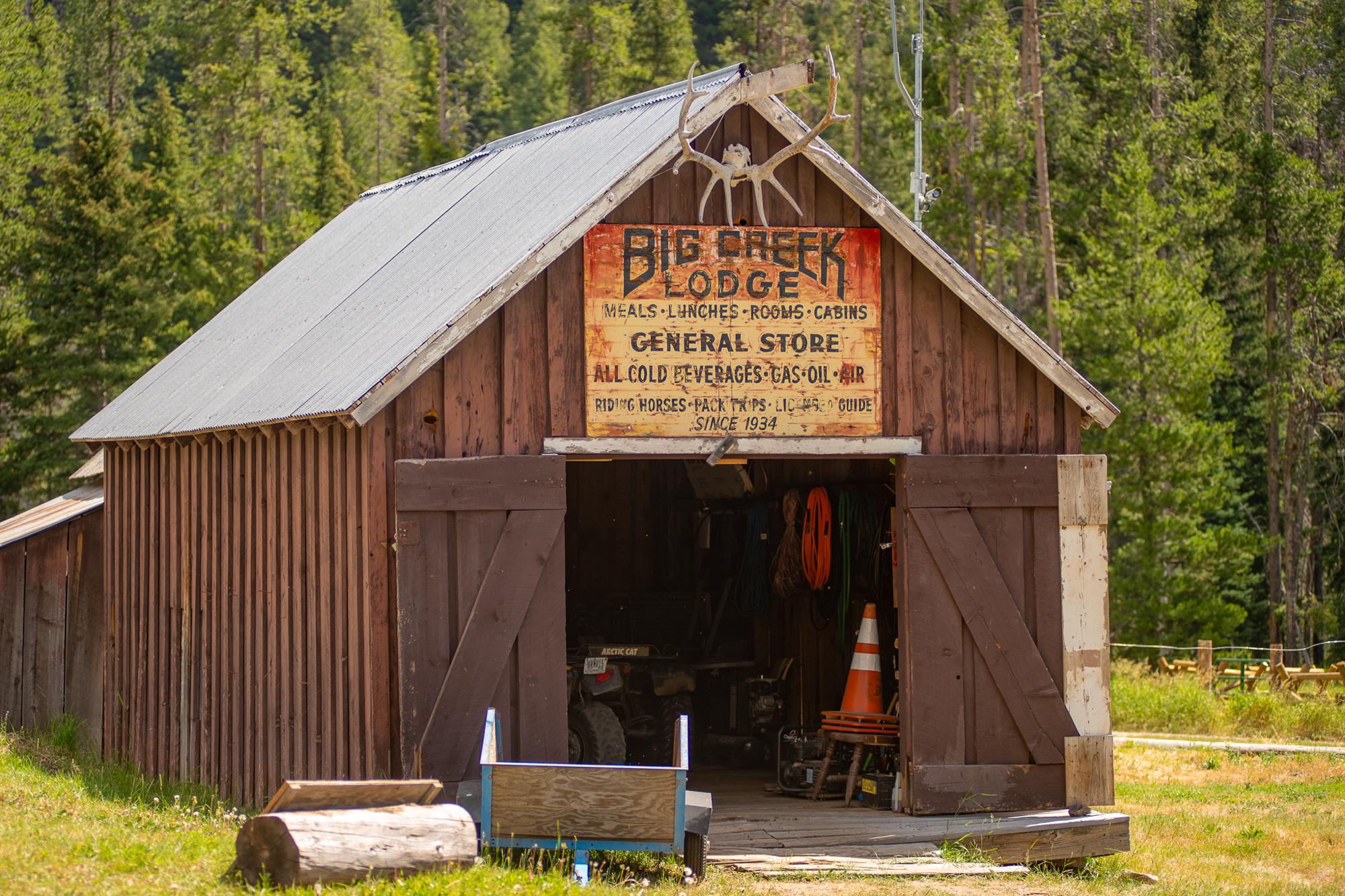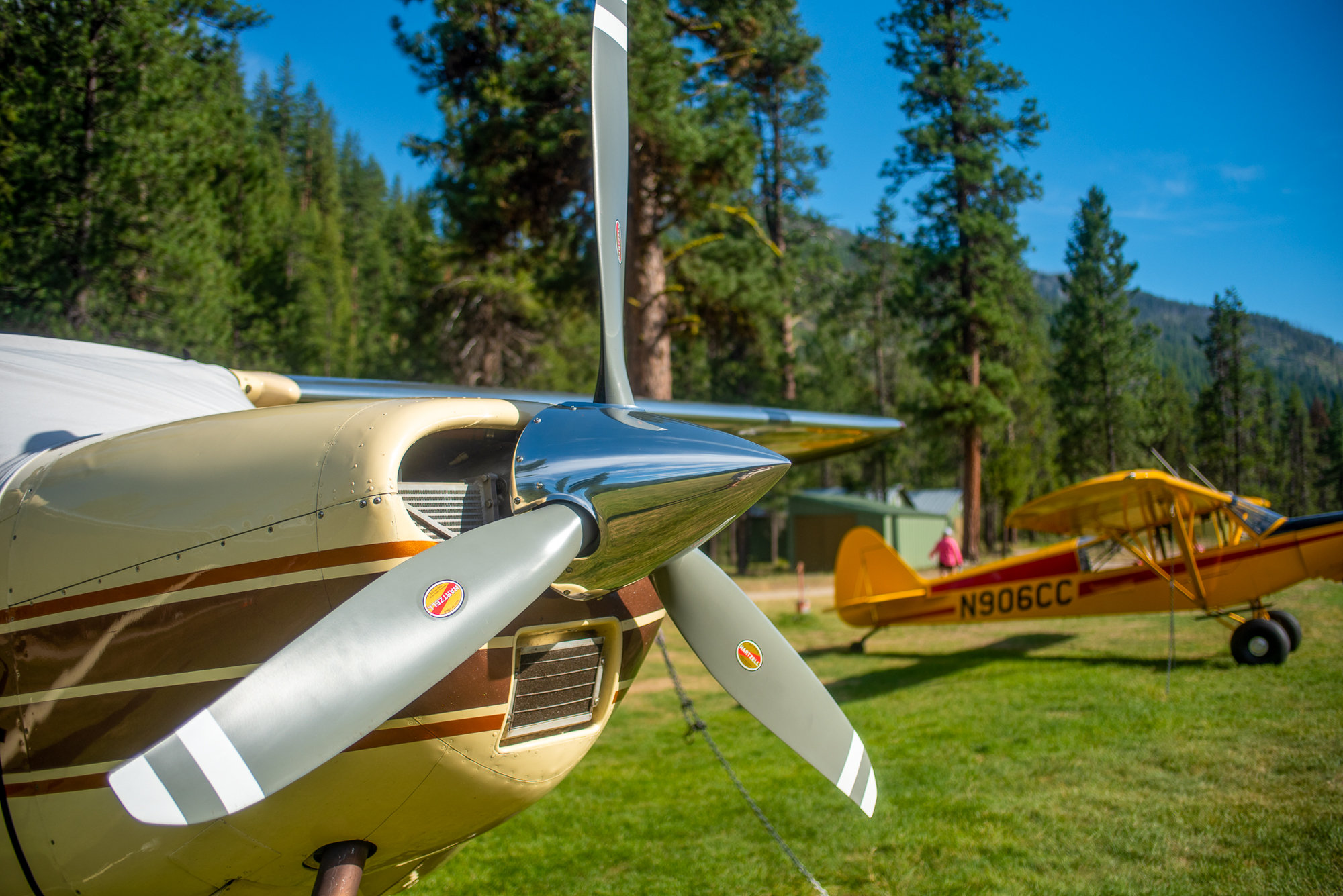“You got your suit, right?” I asked my wife, Louise. “Yep. What about the fly rods?” she responded. We pack many necessities and equipment for an overlanding adventure, and a fly rod and swimsuit are required for any adventure in the “Potato State.” Idaho is an overlanding paradise, offering countless miles of forest roads, remote towns, mining relics, rivers to wet the fly, and countless natural hot springs. Idaho is a land of vast beauty and solitude—the perfect components for adventure.
The roads that comprise this route vary between gravel, dirt, and tarmac. Generally, the federal and state governments maintain the forest roads, so we can expect no major difficulties. A vehicle with four-wheel drive offers reassurance if road conditions abruptly change. Solid, excellent-quality, all-terrain tires are necessary as any repair shops are a long distance away. Fuel can become a concern, so always fill up when available and carry a minimum of five extra gallons. Another consideration is food. Charming Idahoan towns don’t offer Walmarts or Costcos to resupply, so when you see a grocery store, stock up—your belly will thank you, as will the local merchants.

The Route
We topped off on fuel and bought a few miscellaneous groceries in the small, mountain town of Mackay, which serves as the beginning of our route. Mackay (pronounced mae-ki) sits at the base of the tallest Idaho mountain, Mt. Borah, and along the banks of the Lost River. A former copper mining town, Mackay now serves as a gateway to the Lost River Range, White Cloud, and Pioneer Mountains. A massive 6.9 magnitude earthquake rocked the town in 1983, and we spotted the fault line paralleling Highway 93 as we traveled north.
East Fork of the Salmon River/Stanley
Our route took us along the banks of the East Fork of the Salmon River. We passed numerous ranches and cabins before crossing the cattle guard and the national forest boundary. The dirt road turned rougher, but our Ram 3500 with a Four Wheel Camper handled it with ease.
We discovered a lovely open spot that offered an outstanding view of Glassford Peak to our south and an idyllic hot spring below the campsite. Three cast iron bathtubs sit among grasses and wildflowers and can be filled with the hot, natural water piped out of the mountainside.
The following day, we walked to the end of the road to fly fish the East Fork of the Salmon River and soak in another hot spring. Louise and I caught numerous 10- to 12-inch Brookies, but nothing worth bragging about. Afterward, we soaked in Bowery Hot Springs. This hot spring is unique because forest rangers stationed at the nearby Bowery Ranger Station placed a fiberglass tub along the banks of the river. Soakers can fill the tub with hot, natural water piped right out of the mountainside.
Stanley, Idaho, serves as the gateway to the Sawtooth Mountains and is considered worthy of exploring and adventuring. It’s a vibrant, touristy town in the summer, where hiking, rafting, and fly fishing are common in the area’s mountains. It’s also the final place to refill and resupply before the route becomes remote.


Bear Valley/Deadwood Summit/Landmark Ranger Station
We followed Highway 21 west for roughly 20 miles before turning right onto Forest Road 579 (Landmark-Stanley Road). After airing down our tires, we continued west while savoring the wide-open views of Bear Valley and one of Idaho’s numerous backcountry airstrips. Louise and I fished Bearskin Creek for an hour or so without any luck. We didn’t mind the landscape of colorful wildflowers and green grasses, and the solitude brought us joy.
The route veers north, while a lovely detour to the south takes the traveler to Deadwood Reservoir. The gravel road climbs to the north, steadily to Deadwood Summit at 8,250 feet. Snow often lingers through June, and deadfall is a concern, so keep your eyes open.
After cresting the summit, the road parallels a stunningly beautiful meadow and Johnson Creek. We reached an intersection just on the outskirts of the Landmark Ranger Station. Following Warm Lake Road, we traveled west roughly 10 miles to the South Fork of the Salmon River Road, Forest Road 474. Then, we followed the river north. It’s paved but tight, so remain within the posted speed limit and be mindful of pull-outs so other vehicles can pass.
We stopped to soak at Penny Hot Springs. Louise cast a few times while I remained streamside in the hot, soothing natural water. Our favorite hot spring in the area is just a few miles north. Aptly named 16 Mile Springs, this hot spring appears at mile marker 16. A constructed rock wall holds the warm waters cascading down the mountainside. I used the plumbed pipe to fill the tub, and we soaked for an hour or so. Refreshing.



Yellow Pine and Big Creek
The South Fork Road eventually intersects with the East Fork of South Fork Salmon River Road. We turned northeast and headed to Yellow Pine. Once again, the road parallels another stunningly beautiful river. We stopped numerous times to wet the fly. A few trout rose and took our Purple Haze flies. After releasing the fish, we continued our drive to this small summer haven, Yellow Pine, a quintessential, remote backcountry town.
We stopped at the general store to buy a few supplies and support the local merchant. Afterward, we walked across Main Street to enjoy a cold one at Yellow Pine Tavern and admire the local history displayed through photos on their walls. The bartender shared mesmerizing stories of local lore. The tavern also offers a WiFi signal so travelers can connect with the outside world. Want to golf? Grab a free club and ball at the general store and walk to the local golf course. There are no fairways and greens, but the 18-hole course is set through an evergreen forest. Hazards abound, but so fun.
Our Ram 3500 continued along Stibnite Road before turning east onto Profile Summit Road. This single-lane gravel road led us deep into the Idaho backcountry along the beautiful, cascading Profile Creek. We crested Profile Summit, dropped down the mountains’ northern side, and paralleled Big Creek. Here, we took in the magnificence of Idaho and enjoyed just how remote we were. Our truck passed Big Creek Lodge, and we spotted an ideal campsite at Big Creek Campground. This picturesque campground with only a few sites sits at the head of the backcountry airstrip that serves Big Creek and the large national forest ranger station. The ranger informed us that we were also at the boundary of the Frank Church-River of No Return Wilderness, the largest wilderness area in the lower 48.
The next morning, we walked to the lodge for breakfast on the front deck and conversed with pilots and guests who landed earlier that morning for coffee and breakfast. Traveling by backcountry plane? We marveled at the stories of pilots from California, Idaho, Washington, and Texas, learning that Idaho offers backcountry pilots numerous airstrips to land, and many destinations offer lodging and food.
Not wanting to leave, we retraced our route to Yellow Pine. From there, we traveled south along Johnson Creek Road, stopping at the Johnson Creek Backcountry Airstrip, where backcountry pilots can land and camp. We wandered the grass airstrip, admiring the backcountry planes and the truly “overland” nature of flying backcountry airplanes to access wild and scenic places.
After catching a few hungry trout on Johnson Creek, we knew our time in the Idaho backcountry was coming to an end. Itching to meet a few friends in Stanley, we shifted the truck into drive and continued south. The vastness and solitude one can experience along this route is addictive— be forewarned.



The Details
Campsites
Whether along a stream, in a lush meadow, or atop a mountain, Idaho offers some of the best dispersed backcountry campsites in the lower 48. Numerous forest service campgrounds dot most of the route. Pack in and pack out.
Hot Springs
Idaho has the most soaking hot springs in North America. To refine your search, read the Falcon Guide’s Hiking Hot Springs of the Pacific Northwest: A Guide to the Area’s Best Backcountry Hot Springs. Hot spring etiquette can vary, but generally speaking, many backcountry hot springs are swimsuit optional.
Here are some of our favorite hot springs:
Bowery Hot Spring | 43°58’31.1 N 114°30’00.3 W
West Pass Hot Spring | 43°58’51.8 N 114°29’03.8 W
Penny Hot Spring | 44°42’33.4 N 115°42’00.0 W
16 Mile Hot Spring | 44°50’47.6 N 115°41’51.3 W
Boat Box Hot Spring | 44°14’41.3 N 114°53’10.0 W
Fly Fishing
If you like to fly fish, Idaho is the state. Numerous streams and rivers beckon the angler to wet their fly. This route offers over 10 rivers and creeks to fish; some of our favorites are listed below.
- Big Lost River
- Salmon River
- East Fork of the Salmon River
- Johnson Creek
- Bearskin Creek
- Big Creek
- South Fork of the Salmon River

Water
The route follows water almost in its entirety. A filter or LifeSaver jerry can is ideal. We also filled up at the national forest campgrounds.
Difficulty
Generally, the route is very easy. Air down your tires to reduce the risks of puncture. The route covers over 130 miles of gravel roads, but countless side roads are worth exploring.
When to Go
Aim for June through September. Snow can be an issue early in the season, and wildfires in the late season. July might be the preferred month.
Route Deviations
Once in Yellow Pine, one can travel west on Lake Street/Lick Creek Road to McCall, Idaho. It’s a gorgeous drive with ample hiking, photography, and fishing opportunities.
One can also travel west from the Landmark Ranger Station on the paved Warm Lake Road to Highway 55 and roughly Cascade, Idaho. This route offers easy access to and from the Idaho backcountry.
Once at Deadwood Reservoir, one can take Forest Road, 555, south to Lowman, Idaho. This route offers hot springs and other numerous camping opportunities.

Read more: Plan the Experience
Our No Compromise Clause: We do not accept advertorial content or allow advertising to influence our coverage, and our contributors are guaranteed editorial independence. Overland International may earn a small commission from affiliate links included in this article. We appreciate your support.


